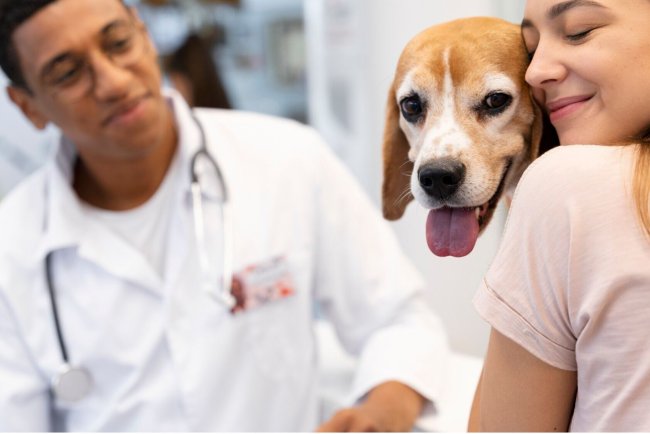How Much Does Pet Insurance Cost?
Pet insurance has become a popular way for pet owners to manage the financial burden of veterinary care.

Pet insurance has become a popular way for pet owners to manage the financial burden of veterinary care. However, understanding how much pet insurance costs and what factors influence these costs can be complex. This article explores the various factors affecting pet insurance costs, provides a look at average prices, and offers tips on managing these costs effectively.
Pet insurance provides a safety net for unexpected veterinary expenses, offering peace of mind and financial protection for pet owners. With the growing number of pet insurance providers and plans, understanding the cost of pet insurance is crucial for making an informed decision. This article delves into the factors that influence pet insurance costs, presents average pricing data, and provides strategies for managing and comparing insurance expenses.
Factors Affecting Pet Insurance Costs
A. Type of Insurance Plan
The type of pet insurance plan you choose has a significant impact on the cost. There are several types of plans, each with its own pricing structure:
-
Accident-Only: This plan covers injuries resulting from accidents but does not include coverage for illnesses or routine care. Accident-only plans are typically the least expensive, as they offer limited coverage.
-
Accident and Illness: This plan provides coverage for both accidents and illnesses, including conditions like infections, cancers, and chronic diseases. It is more expensive than accident-only plans due to the broader range of coverage.
-
Comprehensive: Comprehensive plans, also known as full-coverage plans, include accident and illness coverage along with additional benefits such as wellness care, vaccinations, and dental treatment. These plans are usually the most costly due to their extensive coverage.
B. Pet’s Age and Breed
The age and breed of your pet play a crucial role in determining the cost of insurance.
-
Age-Related Cost Variations: Older pets generally incur higher insurance premiums. As pets age, they are more likely to develop health issues, leading to increased risk for insurers. Puppies and kittens typically have lower premiums due to their generally good health.
-
Breed-Specific Considerations: Certain breeds are prone to specific health issues, which can affect insurance costs. For example, breeds prone to genetic disorders or chronic conditions may have higher premiums due to the increased risk.
C. Geographic Location
The cost of pet insurance can vary significantly based on where you live.
-
Regional Differences in Veterinary Costs: Veterinary care costs differ by region. In areas with higher veterinary costs, insurance premiums are generally higher to match the increased expense of care.
-
Local Insurance Market Variations: The competitiveness of the insurance market in your area can also affect costs. In regions with many insurance providers, you might find more competitive pricing and better options.
D. Coverage Options
The specifics of your policy's coverage options can impact the cost of insurance.
-
Deductibles: The deductible is the amount you must pay out-of-pocket before the insurance coverage kicks in. Higher deductibles usually result in lower monthly premiums, but this means you’ll pay more upfront if you need to make a claim.
-
Co-pays: Co-pays are the percentage of the veterinary bill you are responsible for after the deductible has been met. Plans with lower co-pays generally have higher premiums.
-
Annual and Per-Incident Limits: Policies with higher annual or per-incident limits tend to cost more. These limits cap the amount the insurance will pay for covered expenses, affecting the overall cost of the plan.
E. Policy Features
Additional features included in the policy can also influence the cost.
-
Wellness and Routine Care Coverage: Some plans offer coverage for routine care such as vaccinations, flea control, and annual check-ups. Including these features increases the premium.
-
Additional Benefits: Comprehensive plans may offer benefits like dental care, alternative therapies (e.g., acupuncture), and behavioral therapy. These additional features contribute to a higher cost.
Average Costs of Pet Insurance
Understanding the average cost of pet insurance can help you gauge what to expect when shopping for a plan. Here’s a breakdown of typical costs:
A. General Cost Ranges
-
For Dogs: On average, pet insurance for dogs can range from $30 to $70 per month. The cost varies based on factors such as the dog’s breed, age, and the type of coverage chosen.
-
For Cats: Insurance for cats generally costs between $15 and $40 per month. Cats typically have lower premiums than dogs, reflecting their generally lower healthcare costs.
B. Examples of Typical Monthly Premiums
-
Basic Plans: Basic accident-only plans for dogs might cost around $30 per month, while similar plans for cats might be around $15.
-
Mid-Range Plans: Accident and illness coverage for dogs can range from $50 to $60 per month, and for cats, it may be between $25 and $35.
-
Comprehensive Plans: Comprehensive plans for dogs may cost $60 to $80 per month, whereas comprehensive coverage for cats can range from $35 to $50.
Comparing Pet Insurance Costs
To ensure you’re getting the best value for your money, compare different pet insurance plans thoroughly.
A. Using Online Comparison Tools
Online comparison tools allow you to compare various pet insurance plans side-by-side. These tools can help you see differences in coverage options, premiums, deductibles, and co-pays, making it easier to find a plan that fits your needs and budget.
B. Analyzing Quotes from Different Providers
Request quotes from multiple insurance providers to compare costs. Pay attention to the details of each quote, including coverage limits and exclusions, to understand the full scope of what each plan offers.
C. Evaluating Coverage vs. Cost
When comparing plans, evaluate the balance between coverage and cost. A lower premium might be attractive, but it could come with higher deductibles or limited coverage. Ensure the plan provides adequate protection for your pet’s needs while staying within your budget.
Tips for Managing Pet Insurance Costs
Managing pet insurance costs effectively can help you stay within your budget while ensuring your pet is protected.
A. Choosing the Right Deductible
Select a deductible that balances affordability with coverage. Higher deductibles generally mean lower premiums, but make sure you can comfortably afford the deductible if you need to make a claim.
B. Opting for Annual Payments vs. Monthly
Many insurance providers offer discounts for paying premiums annually rather than monthly. If your budget allows, consider paying annually to save on overall costs.
C. Taking Advantage of Discounts and Offers
Look for discounts, such as multi-pet discounts, or special offers provided by insurance companies. Some providers offer lower premiums for insuring multiple pets or for being a loyal customer.
Potential Additional Costs
Be aware of potential additional costs associated with pet insurance.
A. Exclusions and Limitations
Policies may have exclusions or limitations that could affect the coverage you receive. Carefully review the policy to understand what is not covered and how it might impact your out-of-pocket expenses.
B. Out-of-Pocket Expenses
Even with insurance, you may still incur out-of-pocket costs. Consider these expenses when evaluating your overall financial plan for pet care.
C. Policy Adjustments and Upgrades
As your pet ages or if their health changes, you may need to adjust or upgrade your policy. Be prepared for potential changes in cost if you need to modify your coverage.
Alternatives to Pet Insurance
If pet insurance is not the right fit for you, consider these alternatives.
A. Pet Savings Accounts
A pet savings account involves setting aside a specific amount of money each month to cover future veterinary expenses. This self-funded approach provides flexibility but requires discipline and may not fully cover unexpected emergencies.
B. Veterinary Discount Plans
Discount plans offer reduced rates on veterinary services and can be a cost-effective alternative to insurance. These plans do not cover expenses outright but can lower the cost of routine and emergency care.
C. Crowdfunding and Financial Assistance
Crowdfunding platforms can help raise funds for specific medical expenses, while financial assistance programs may provide support for qualifying pet owners. These options can be useful for covering significant or unexpected costs.
Final Thoughts
Understanding the cost of pet insurance and the factors that influence it is essential for making an informed decision about your pet’s coverage. By considering the type of plan, your pet’s age and breed, your location, and the coverage options, you can find an insurance plan that fits your needs and budget. Remember to compare different plans, evaluate coverage versus cost, and explore alternatives if needed. With careful planning and research, you can ensure your pet receives the care they need while managing your financial responsibilities effectively.
What's Your Reaction?



















